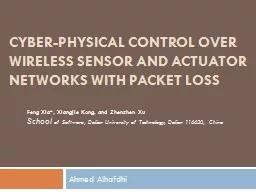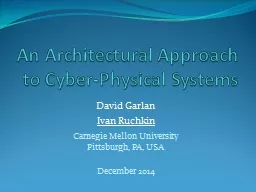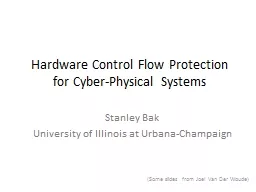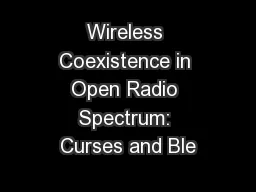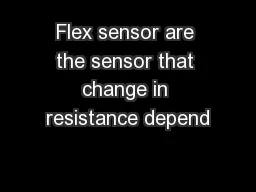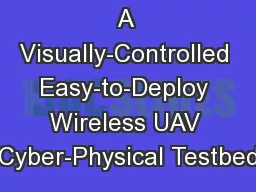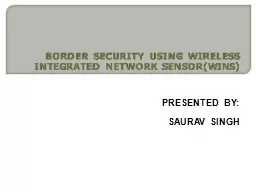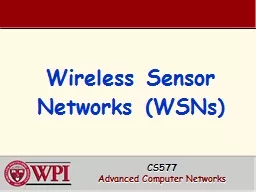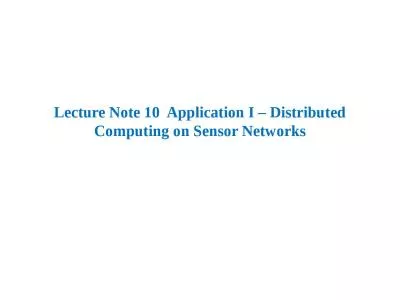PPT-Cyber-Physical Control over Wireless Sensor
Author : min-jolicoeur | Published Date : 2015-11-22
and Actuator Networks with Packet Loss Ahmed Alhafdhi Feng Xia Xiangjie Kong and Zhenzhen Xu School of Software Dalian University of Technology Dalian 116620
Presentation Embed Code
Download Presentation
Download Presentation The PPT/PDF document "Cyber-Physical Control over Wireless Sen..." is the property of its rightful owner. Permission is granted to download and print the materials on this website for personal, non-commercial use only, and to display it on your personal computer provided you do not modify the materials and that you retain all copyright notices contained in the materials. By downloading content from our website, you accept the terms of this agreement.
Cyber-Physical Control over Wireless Sensor: Transcript
Download Rules Of Document
"Cyber-Physical Control over Wireless Sensor"The content belongs to its owner. You may download and print it for personal use, without modification, and keep all copyright notices. By downloading, you agree to these terms.
Related Documents

